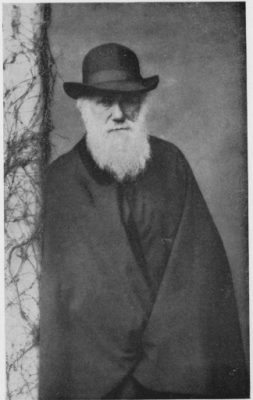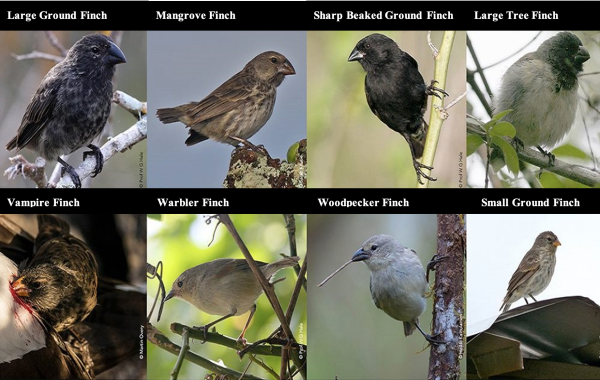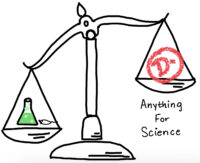
By Shivani Manikandan
“You care for nothing but shooting, dogs, and rat-catching, and you will be a disgrace to yourself and all your family” (2).
Who do you think this quote is about? You may be surprised to know it is about one of the most well-known scientists of the 19th century. Charles Darwin, often called the father of evolution, is credited with making pivotal discoveries that transformed the field of biology. The quote above is from Darwin’s autobiography, where he describes his own father’s disappointment with his academics. In his own words, “When I left the school I was for my age neither high nor low in it; and I believe that I was considered by all my masters and by my Father as a very ordinary boy, rather below the common standard in intellect” (2).
In simpler words, Darwin, like many of us, was an average C student in school. His father, a respected physician, was so disappointed with his work that he sent Darwin off to sea aboard the HMS Beagle in 1831 (2). However, to everyone’s surprise, this voyage resulted in the development of one of the most influential theories in biology: natural selection.
While we often think of scientists as lone thinkers, the greatest discoveries are really the culmination of years of gradual progress by many individuals. Darwin’s discovery of natural selection was no different. During the Beagle voyage, Darwin had time to read the theories of thinkers like Thomas Malthus and Charles Lyell. Malthus drew connections between food resources and populations, suggesting that the environment of a population impacts its growth (1). Additionally, scientists like Lyell discussed the geological evolution of the world over long periods of time. These ideas and more led Darwin to think about how major environmental changes can cause species to change over time (6).
Aside from proposing transformational theories like natural selection, Darwin also changed how the natural world was studied. Unlike other theorists of his time, he was committed to an evidence-based approach to science. From finches to pigeons and beetles to barnacles, Darwin spent much of his later life collecting evidence to support his theories (1, 4).
Like any good theory, natural selection led the scientific community to many more questions. In his book explaining natural selection, The Origin of Species, Darwin admitted to not knowing the mechanism of evolution. What inside an organism causes variations? How are variations passed on (6)? Natural selection was a steppingstone for various fields of science and is a foundational concept in our understanding of the past, present, and future. From the origins of the human species to the inheritance of genetic diseases to the impact of humanity on the ecological future of the planet, our understanding of the natural world stems in part from the work of an average C student (3).
At the University of Iowa, you can find work that is related to Darwin’s discoveries in the links below. Specifically, you can find experts studying the evolution of sexual reproduction and its importance to biodiversity, the origin of eukaryotes and how they differ from prokaryotes, the stress responses within species that result in adaptation, and more (7, 8, 9).

In the study of sexual reproduction, one question that UIowa researchers are investigating is the role of sexual reproduction on the composition of genes and their structure in snails. They are also working to understand how rare asexual reproduction is and its relation to the accumulation of harmful mutations (7). These questions will help us understand the value of biodiversity in a world where global warming and other environmental changes pose a threat to it.
In relation to the origin of eukaryotes, researchers are working to understand how important processes such as meiosis came to exist, and how different eukaryotes relate to each other (8). These finds can help improve our understanding of how eukaryotes became so diverse and provide insight into the cellular processes in our body.
Regarding the evolution of stress responses, researchers believe that a better understanding of how species respond to stress and how this is passed on can shed light on how the microbiota inside humans evolve over time to become pathogenic as their environment changes (9). These are just a few examples of how Darwin’s work continues today, and how far his ideas have come.
I hope Darwin’s story serves as a reminder that your academic struggles do not define your ability to contribute to science or prevent you from being a revolutionary. In the words of Darwin himself, “One lives only to make blunders” (5). Don’t let your academic blunders hold you back. Darwin serves as an example that the most important characteristic of a scientist is curiosity, so follow your curiosity and learn more with the links below!
Links to research groups in the University of Iowa:
1) The Evolution of Sexual Reproduction
3) The Evolution of Stress Responses
The information for this article was obtained from the following sources:
2) http://darwin-online.org.uk/content/frameset?viewtype=text&itemID=F1497&pageseq=28
3) https://www.nature.com/scitable/spotlight/charles-darwin-7567158/
4) https://education.nationalgeographic.org/resource/hms-beagle-darwins-trip-around-world
5) The Correspondence of Charles Darwin, Volume 9: 1861
6) https://www.youtube.com/watch?v=dfsUz2O2jww&ab_channel=CrashCourse
7) https://biology.uiowa.edu/people/maurine-neiman
8) https://biology.uiowa.edu/people/john-logsdon
9) https://biology.uiowa.edu/people/bin-z-he
10) https://galapagosconservation.org.uk/wildlife/darwins-finches/

